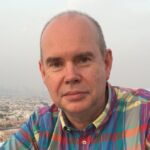By Miles Oglethorpe
Although the demise of coal can justifiably be blamed on the shift in government support to the nuclear industry, in truth the main challenge it faced was from petroleum. Initially, Scotland’s oil industry was also based on mining. Its geographical centre was just to the west of Edinburgh, not far from where the airport can now be found. This evolved thanks to the enterprise of James ‘Paraffin’ Young from the late 1840s, and it grew to become the world’s first large-scale petrochemicals industry (e.g. Oakbank Oil Works | Canmore). All the mines and chemical works have now almost entirely disappeared, but the enormous pink spoil heaps near to Edinburgh Airport have not (see Figure 1). To the uninitiated, they resemble the volcanic landscapes of Lanzarote, but their historical significance is reflected in the fact that some of them have been designated as Scheduled Monuments by Historic Environment Scotland.
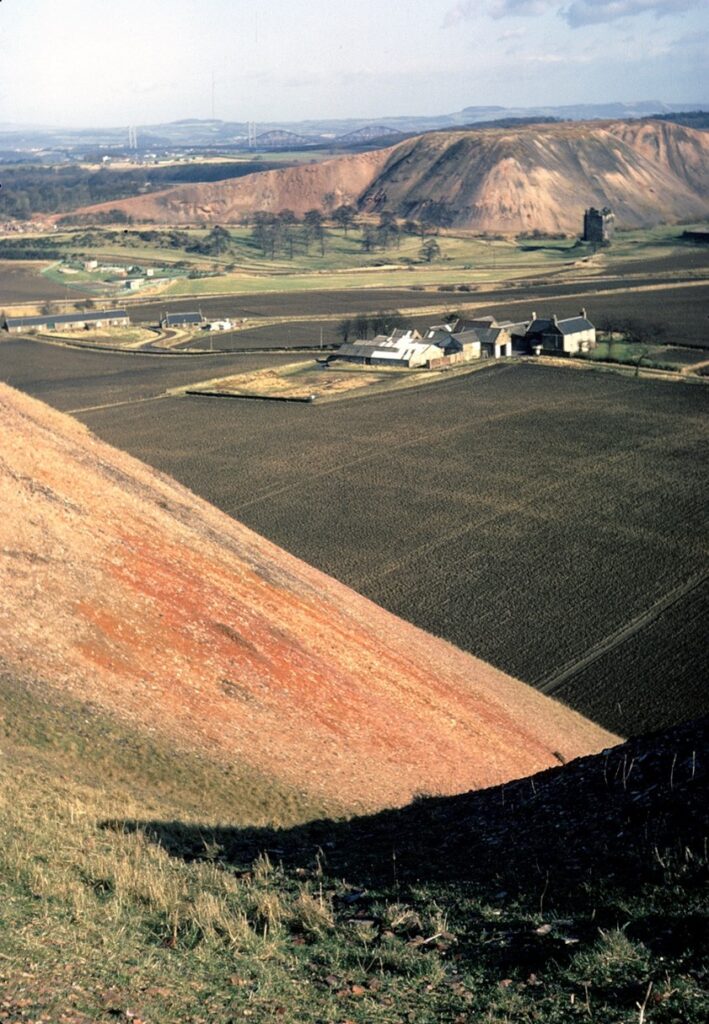
To most people, however, Scotland’s current energy industry is focused offshore. In truth, its origins date from 1959 in the ‘Southern North Sea’ around Groningen in the Netherlands, and then the gas fields off East Anglia in England from the mid-1960s. The major transformation occurred with the Norwegian discovery of oil in the Ekofisk field in 1969, followed not long after by the Forties field and Brent in the UK sector (see also Oil, Oil, Who Wants Some Oil? Part 1: Reflections on oil infrastructures at a time of negative oil price). By the mid-1970s, ‘Yarmouth Yanks’ from East Anglia and real Americans, amongst others, were flooding into Aberdeen. Scotland’s oil boom was beginning, intensified by the oil crisis and price controls brought about by conflict in the Middle East and by OPEC.
Today in the UK, most attention continues to focus on the political and economic impact of ‘North Sea Oil’, neglecting the cultural consequences and the astonishing technological achievements of the industry. Part of the problem is that the physical presence of the industry onshore is transient and often unattractive – there is no easily recognisable or likeable visual signature, like the headframe of a colliery, for example. Although impressive, the gigantic construction yards in places like Nigg and Ardesier were not visually pleasing, and nor are the gaggles of portal-framed steel sheds housing supplies and workshops for offshore operations in suburban industrial estates and around re-purposed fishing harbours. Some people argue that even the support ships, many of which seem to be built back-to-front, don’t look right….(see image below).
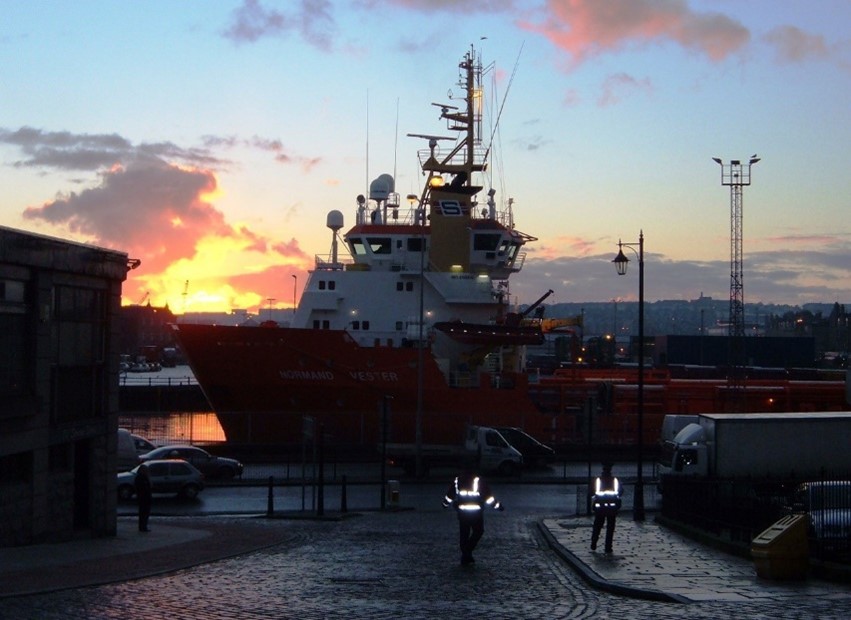
Another obstacle to a clear understanding of the contribution of the energy industries to our history and national identity is the frequently adopted simplistic assumption that it is entirely to blame for the current climate-change crisis. There is no doubt that energy consumption lies at the heart of the crisis, but understanding how we got here, and the complex industrial evolution that has driven us, is crucial. There is the added political argument that the North Sea’s petroleum resources are ‘Scotland’s Oil’, combined with the widespread belief that it saved the UK economy in the 1980s and has been frittered away by successive Westminster governments, in stark contrast to the experience in Norway. As a consequence, a dispassionate assessment of its historical importance is often difficult.
Yet, the stories of our offshore oil and gas industry are compelling and quite extraordinary. One of the most visually striking episodes relates to the construction yard of Robert McAlpine at Ardyne Point, situated on the west coast in an Argyll Fjord. Here, McAlpine, whose company built the iconic Glenfinnan (Hogwart Express) Viaduct 75 years earlier and the Blackwater Dam at Kinlochleven not long after, constructed gigantic concrete production platforms (referred to as ‘Condeeps’ by the Norwegians, who developed the concept in the early 1970s) before they were towed round the north coast of Scotland to be positioned in fields such as Brent and Frigg. The scale of these structures, and the fact that they floated and could be towed, defied belief.
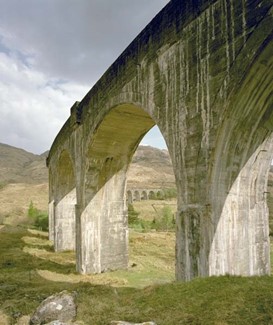
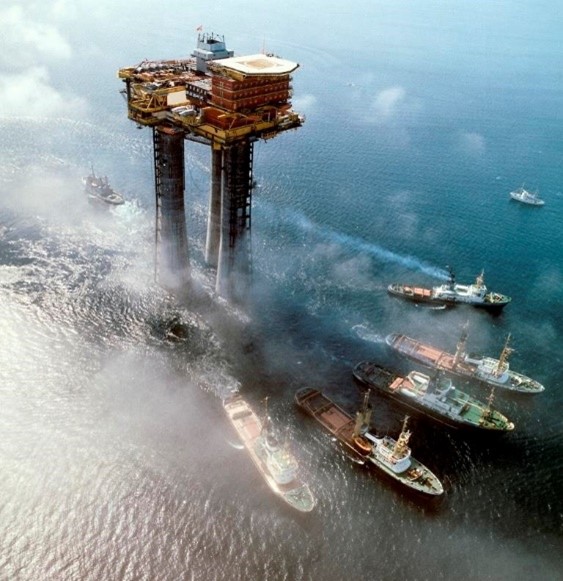
The offshore oil and gas technology continues to be awe-inspiring, augmented further by enormous decommissioning challenges. An incredible example of this is the development of gigantic vessels, such as ‘Pioneering Spirit’, which is designed to remove topside structures of production platforms weighing up to 48,000 tons in one piece. The vessel was recently used to remove topsides from two platforms in the Brent field.
For me, the biggest mystery is why the UK offshore oil and gas industry has received so little public recognition for its achievements. This compares very poorly with the outstanding work done in Norway, where the excellent Norsk Oljemuseum in Stavanger reflects a pervasive respect for its oil and energy heritage that prevails s at the highest levels of government and even features in TV drama series (BBC Four – State of Happiness, Lykkeland – NRK TV). This has been further supported by exemplary documentation projects supported by a coalition of Norwegian state institutions (especially the national archives service) and the petroleum industry itself. These include outstanding web resources developed for the Ekofisk, Frigg, Statfjord, Vallhall and Draugen fields.
In contrast, here in the UK, with the encouragement of our Norwegian counterparts, we have managed to maintain a modest project called ‘Capturing the Energy’, based at the University of Aberdeen and focused on encouraging the industry to retain its most important archives and records as its business evolves in the rapidly changing world of energy. Decommissioning and the sale of assets is now occurring so fast that there is a real danger of changing management and ownership regimes not recognising the significance of what has gone before and destroying valuable historic records.
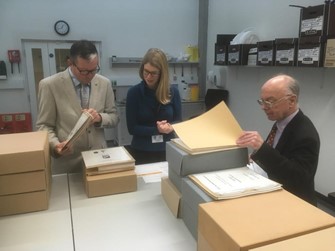
Capturing the Energy was initially founded in 2005 by a group of enthusiastic individuals and organisations, notably TOTAL, the DTI (now BEIS – the Department for Business, Energy & Industrial Strategy), the University of Aberdeen, Historic Scotland, what was then UKOA (now Oil & Gas UK), BACS (the Business Archives of Scotland) and with the support of many other businesses and organisations. Although it is fair to say that it has not come close to the achievements of our colleagues in Norway, it has continued to operate, building on the first major project – TOTAL’s Frigg gas field). This had the advantage of being an Anglo-Norwegian field, so it was a great way of helping us learn directly from our friends in Stavanger.
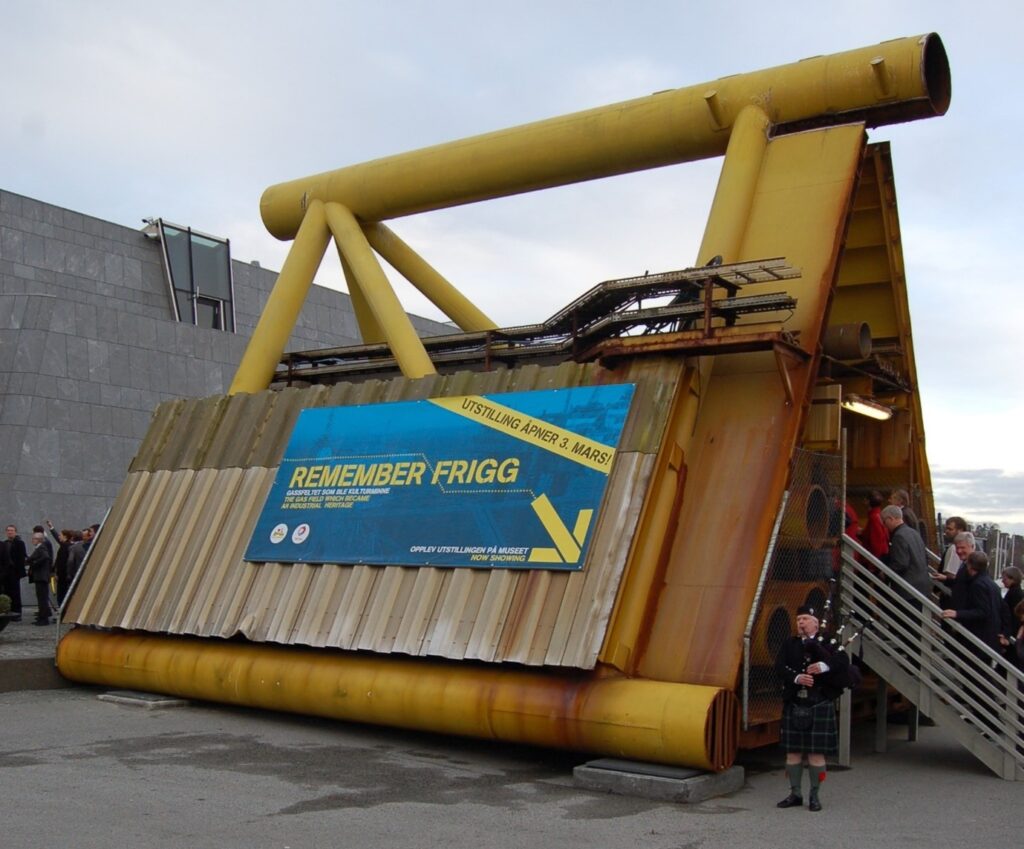
There were many aspects of Frigg that reinforced the sense that the oil and gas industry was undervalued by the UK general public. As an example, the scale of the urban transformation brought about by the arrival of Frigg gas at St Fergus near Peterhead in 1977 is rarely recognised. At a stroke it rendered almost every coal-fired town gas works in the UK redundant. Since then, many of the gas holders, retort houses and associated buildings have disappeared from our towns and cities, as has a huge amount of air pollution. At the same time, tens of millions of gas-fired devices in homes and businesses had to be modified to burn natural as opposed to coal gas. At its height, Frigg supplied 40% of UK demand for gas, so the cessation of production in 2004 represented a major strategic shift in UK gas supply.

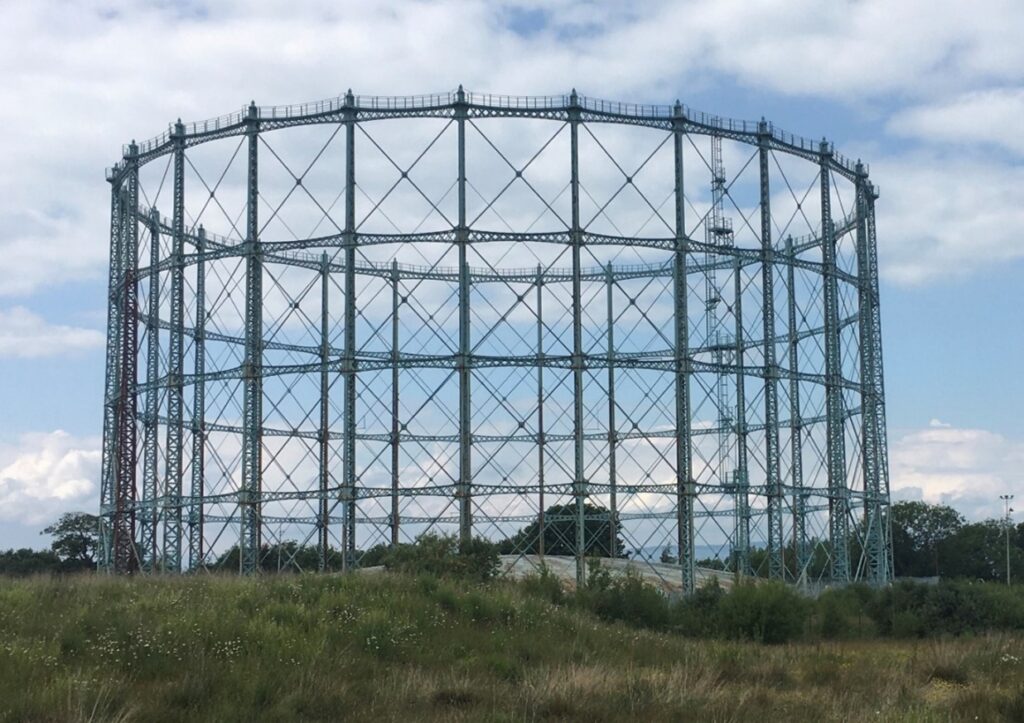
The frustration I have long felt about the lack of recognition afforded our energy industries in the UK, especially oil and gas, was considerably offset by the brilliant conference recently held by The Centre for Energy Ethics, ‘A Place for Oil: Memory of Oil and Place in Museums across the World’. It was reassuring to hear about inspiring work in so many other countries, not least Norway, Venezuela, Qatar, Poland, Romania, Azerbaijan, Iran, Nigeria, USA and Canada.
There are many more stories to tell, not least from other major current producers like Saudi Arabia, Russia, Bahrain, Egypt and China. The recent thematic study of Historic Petroleum by TICCIH (The International Committee for the Conservation of the Industrial Heritage – see Draft 1 (ticcih.org)) demonstrated how difficult it is to find authentic historic remains dating from the early exploitation of oil, but it did confirm that a rich history exists in many countries, and that there are some exciting and significant stories still to be told.
Right now, however, with the urgent need for a more effective response to climate change, it is important to reflect on the advances that are being made in developing new sources of renewable energy, the most recent of which are focusing on tidal as well as solar and geothermal power. However, one fascinating facet of Scotland’s story has yet to be properly told – the evolution of its National Grid. In the 1960s, there was huge excitement at the expansion of the Grid to deliver electricity to the remotest corners of the UK. Now, the story is precisely the reverse. The renewables revolution is ensuring that increasing quantities of electricity are now flowing the other way – from the remoter parts of the country and offshore to our urban heartlands. This is a transformation in every sense.




